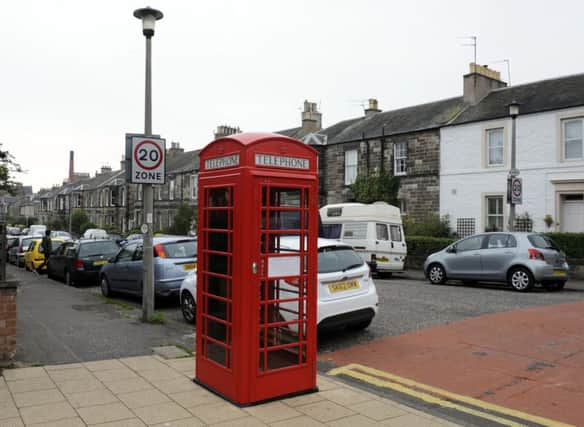Chitra Ramaswamy: Cherish the phone box


Today, in a country where 93 per cent of the population own a mobile phone, the function of the telephone kiosk needs to change if it’s going to survive. I can’t remember the last time I set foot in a phone box, let alone one of the iconic red kiosks designed by Sir Giles Gilbert Scott, the architect behind Battersea Power Station, Waterloo Bridge, Liverpool Cathedral, and the Bankside power station that houses Tate Modern. I do, however, remember them from my youth with a completely disproportionate fondness considering the amount of time I spent in them (much less than, for example, school, which has a markedly less Proustian hold over me).
Phone boxes occupy a powerful place in our collective memory. It’s their elegant form, voted the greatest British design of all time earlier this year ahead of the double decker bus, first class stamp, and the tartan print. It’s the frisson that comes with representing both public and private space: phone boxes are illicit yet in the thick of it. They’re the little glass houses where you made embarrassing calls to people you fancied, or phoned your mum when you got lost. Yet making calls was only ever part of the story. I remember smoking in phone boxes (I still don’t get what that was about), kissing in phone boxes, and once or twice, when there was nowhere else to go, I remember crying in phone boxes.
Advertisement
Hide AdAdvertisement
Hide AdI barely even register these 80-year-old confessionals on the street anymore. But start looking and eventually, like their equally endangered cousin the post office, you’ll find one. A pop-up time capsule standing tall, proud, and red on the streets of our villages, towns, and cities, refusing to die. Or stop smelling of piss.
In Scotland there are just over 1,000 red telephone boxes left and over the past 12 months not a single call has been made from 684 of them. Not one. Just imagine all those tiny whiffy cathedrals of communication: silent, empty, forever waiting for a call. There’s something sad and a little bit silly about a phone box where the phone never rings. It’s like a David Shrigley cartoon waiting to be drawn. No wonder they’re going for three grand on eBay.
What we should really do with these great British repositories of human behaviour and talk is find another use for them. Not inside our homes but out in the public realm where they belong. Thankfully, following a 30-year programme of stripping thousands of phone boxes from across the country, BT has finally recognised this. In 2012 the company introduced the adopt-a-kiosk scheme allowing councils and charities to purchase local red phone boxes for a pound. Like in Comrie, where a phone box has been turned into a defibrillator for use by the local community. Or in Portobello, where one has become the Porty Light Box, an exhibition space most recently used for a “reading experiment” by the Edinburgh International Science Festival. The options are endless – libraries, sound installations, oral history projects, storytelling centres, one-person shows, pop-up shops, therapy spaces… you get my drift.
Teenagers in 2015 probably see red phone boxes as grim, ugly, squalid places, if they see them at all. This is the sad lot of all public amenities that are neglected and fall into disuse. Showered with the graffiti, broken glass, takeaway cartons, and cigarette butts that make us forget what they meant to us in the first place, we eventually stop seeing them. Let’s not let this happen to the last of the 70,000 red phone boxes that once lined our streets. Step into any one and you step into a Britain that no longer exists. But that doesn’t mean it’s not worth preserving.